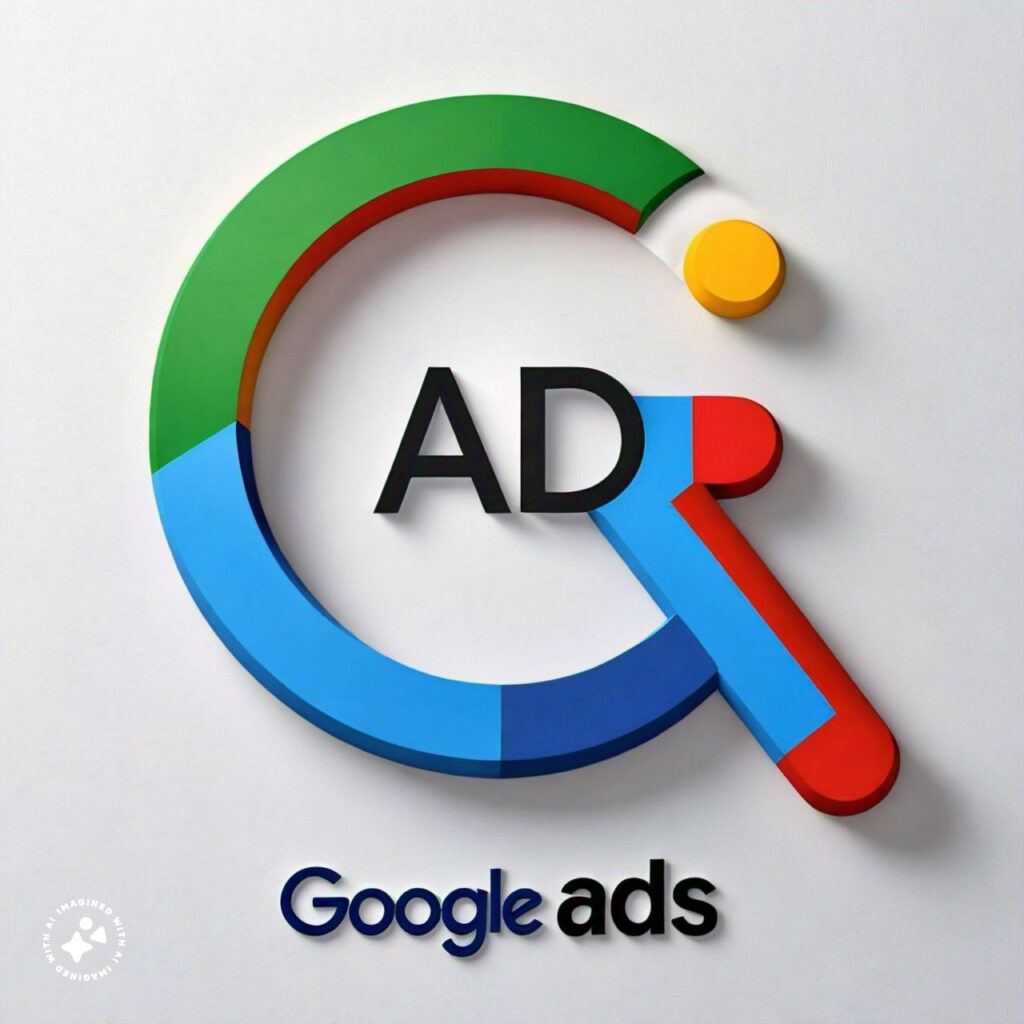Mastering Google Ads: A Comprehensive Guide to Maximizing Your Advertising Potential
Introduction
In today’s digital era, the landscape of advertising has significantly shifted from traditional mediums to dynamic online platforms. Among the most powerful tools available for online advertising is Google Ads. Launched as Google AdWords in 2000, it has since evolved into a robust advertising platform now known as Google Ads. This comprehensive guide will explore Google Ads’ features, benefits, strategies, and best practices to help you leverage its full potential for your business.
Table of Contents
Understanding Google Ads
What is Google Ads?
Google Ads is an online advertising platform developed by Google that allows businesses to create ads displayed on Google’s search engine and other Google properties. It operates on a pay-per-click (PPC) model, meaning advertisers are charged only when users click on their ads. This model ensures that businesses pay for actual user engagement, making their ad spend more efficient. Know More

Types of Google Ads Campaigns
Google Ads offers a variety of campaign types tailored to different advertising objectives:
- Search Campaigns: These text-based ads appear on Google’s search engine results pages (SERPs) when users search for specific keywords, capturing intent-driven traffic.
- Display Campaigns: These ads, which can be text, image, or video, appear on websites within Google’s Display Network, helping to build brand awareness and reach a wider audience.
- Shopping Campaigns: Ideal for e-commerce businesses, these ads showcase products and appear on Google Shopping, Google Search, and partner websites.
- Video Campaigns: These ads run on YouTube and across the Google Display Network, available as skippable or non-skippable videos, designed to engage and capture viewers’ attention.
- App Campaigns: Designed to promote mobile apps, these ads run across Google Search, Play Store, YouTube, and the Display Network to drive app installs and user engagement.
- Smart Campaigns: Automated campaigns intended for small businesses, using machine learning to simplify ad creation and optimize performance.
Benefits of Google Ads
- Targeted Reach: Google Ads enables precise targeting based on keywords, demographics, location, and user behavior, ensuring your ads reach the right audience.
- Measurable Results: The platform provides detailed analytics and performance metrics, allowing advertisers to track campaign effectiveness and make informed decisions.
- Cost Control: Advertisers have full control over their budget, with options to set daily or monthly limits and adjust bids to optimize spending.
- Flexibility and Scalability: Google Ads caters to businesses of all sizes, from small startups to large corporations, allowing campaigns to scale as needed.
- Fast Results: Unlike organic SEO, Google Ads can drive immediate traffic and generate leads quickly, making it ideal for time-sensitive campaigns.
Setting Up Your Google Ads Account
Step-by-Step Guide to Account Creation
- Sign Up: Visit the Google Ads website and sign up using your Google account. Create a new Google account if necessary.
- Define Your Campaign Goals: Google Ads will prompt you to select your campaign goals, such as driving website traffic, generating leads, increasing sales, or promoting brand awareness.
- Choose Your Campaign Type: Select the campaign type that best aligns with your goals. For example, choose a Search Campaign to target users searching for specific keywords.
- Set Your Budget: Determine your daily or monthly budget. Google Ads provides recommendations based on your industry and goals.
- Define Your Target Audience: Specify your target audience by location, demographics, interests, and behaviors to ensure precise ad targeting.
- Select Keywords: Use keyword research to identify relevant keywords for your campaign. Google Ads’ Keyword Planner can help you find the right keywords.
- Create Your Ads: Write compelling ad copy incorporating your chosen keywords. For display and video campaigns, design engaging visuals and videos.
- Set Bidding Strategy: Choose a bidding strategy that aligns with your campaign objectives, such as manual bidding, automated bidding, or cost-per-click (CPC) bidding.
- Launch Your Campaign: Review your campaign settings and launch your ads. Regularly monitor their performance and make necessary adjustments.
Crafting Effective Google Ads
Writing Compelling Ad Copy
- Use Relevant Keywords: Integrate relevant keywords into your ad copy to enhance ad relevance and increase the likelihood of your ad being shown to the right audience.
- Highlight Unique Selling Points (USPs): Clearly emphasize what sets your product or service apart from competitors, using concise and impactful language.
- Include a Strong Call-to-Action (CTA): Encourage users to take action with compelling CTAs like “Buy Now,” “Learn More,” or “Get a Free Quote.”
- Utilize Ad Extensions: Enhance your ads with ad extensions such as sitelink extensions, call extensions, and location extensions to provide additional information and increase ad visibility.
Designing Engaging Visuals
- High-Quality Images: Use high-resolution, visually appealing images relevant to your ad content. Avoid clutter and focus on clear, eye-catching visuals.
- Consistent Branding: Ensure your visuals align with your brand’s identity to build recognition and trust among your audience.
- Effective Video Content: For video ads, create engaging content that captures attention within the first few seconds, using storytelling, humor, or emotional appeal to connect with viewers.
Utilizing Ad Extensions
- Sitelink Extensions: Add links to specific pages on your website, such as product pages or contact information, giving users additional options to explore.
- Call Extensions: Include a phone number in your ad to encourage users to call your business directly, particularly useful for local businesses.
- Location Extensions: Display your business address and a map, making it easier for users to find your physical location.
- Callout Extensions: Highlight special offers, promotions, or unique features of your product or service.
- Structured Snippet Extensions: Provide additional details about your products or services, such as categories, types, or features.
Advanced Google Ads Strategies
Keyword Research and Selection
- Keyword Planner: Utilize Google Ads’ Keyword Planner to discover new keyword ideas and gain insights into search volume and competition.
- Long-Tail Keywords: Target long-tail keywords that are more specific and less competitive, often resulting in higher conversion rates.
- Negative Keywords: Identify and exclude irrelevant keywords that could trigger your ads and waste your budget.
- Competitive Analysis: Analyze your competitors’ keywords and ad strategies to identify opportunities and gaps in your own campaigns.
Bidding Strategies
- Manual CPC Bidding: Set your own maximum cost-per-click for keywords, giving you more control over your budget and bidding strategy.
- Enhanced CPC (ECPC): Allow Google Ads to adjust your manual bids to maximize conversions while staying within your budget.
- Target CPA (Cost Per Acquisition): Set a target cost per acquisition, and Google Ads will automatically adjust bids to help you achieve that goal.
- Target ROAS (Return on Ad Spend): Set a target return on ad spend, and Google Ads will adjust bids to maximize revenue based on your target.
- Maximize Clicks: Let Google Ads automatically set your bids to get the most clicks within your budget.
- Maximize Conversions: Automatically set bids to get the most conversions for your budget.
A/B Testing
- Ad Variations: Create multiple versions of your ad copy and visuals to test which performs better. Experiment with different headlines, descriptions, and CTAs.
- Landing Pages: Test different landing pages to see which one converts better. Ensure that each landing page is relevant to the ad and provides a seamless user experience.
- Audience Segments: Experiment with different audience segments to identify which groups respond best to your ads.
- Bidding Strategies: Test various bidding strategies to determine which delivers the best return on investment (ROI).
Remarketing Campaigns
- Website Visitors: Target users who have previously visited your website but did not convert, showing them ads that remind them of your products or services.
- Cart Abandoners: Reach out to users who added items to their shopping cart but did not complete the purchase, offering special incentives to encourage them to return and complete the transaction.
- Previous Customers: Target customers who have made past purchases, promoting new products, upselling, or offering loyalty discounts to encourage repeat business.
Monitoring and Optimization
Analyzing Performance Metrics
- Click-Through Rate (CTR): Measure the percentage of users who click on your ad after seeing it. A high CTR indicates your ad is relevant and compelling.
- Conversion Rate: Calculate the percentage of users who complete a desired action (e.g., purchase, sign-up) after clicking on your ad, gauging the effectiveness of your landing page and ad content.
- Cost Per Click (CPC): Track the average amount paid for each click on your ad, ensuring you’re staying within your budget.
- Cost Per Acquisition (CPA): Measure the cost of acquiring a new customer or lead, providing insight into the efficiency of your ad spend.

